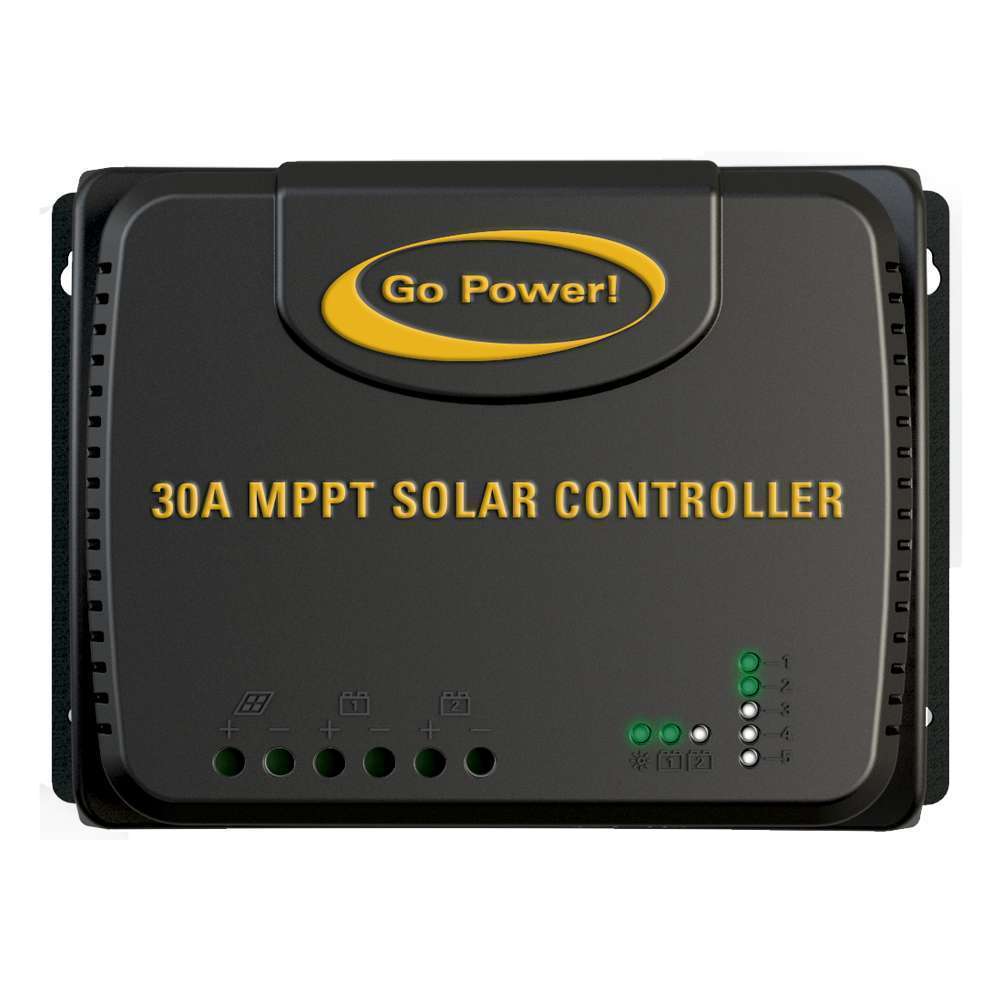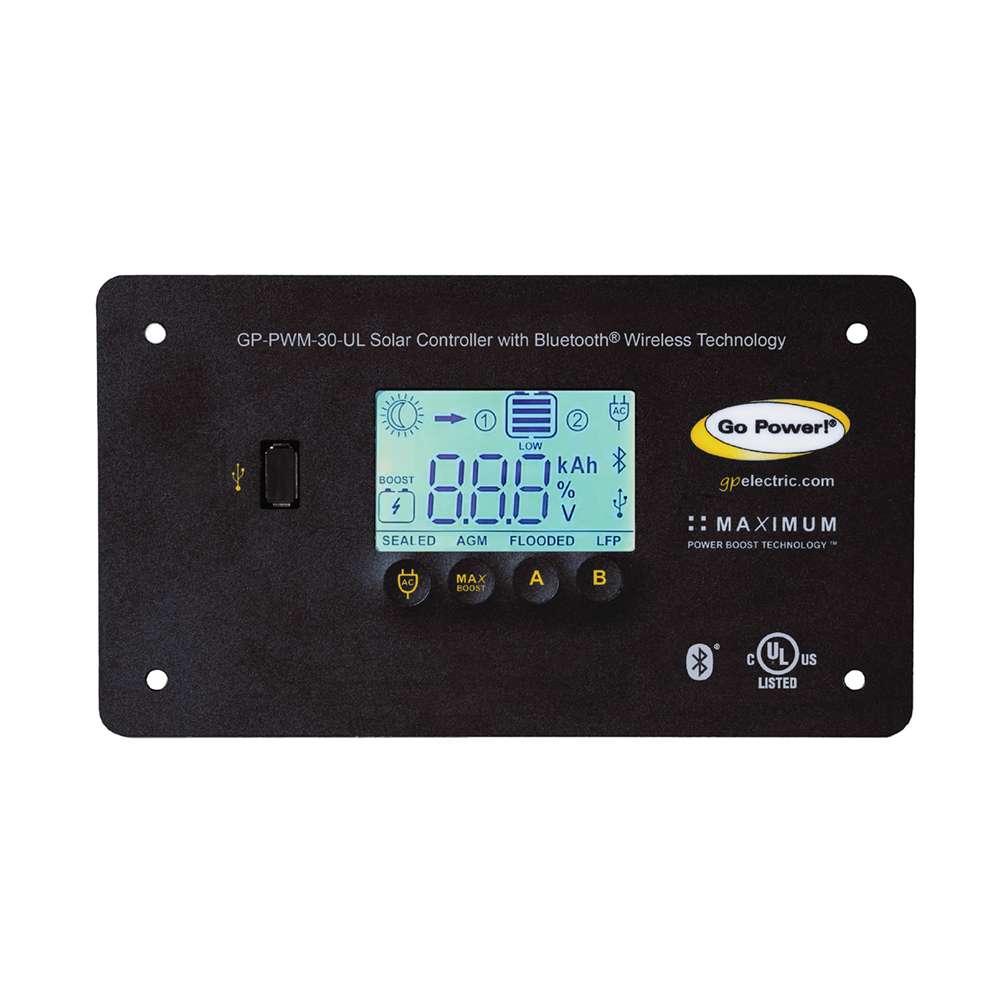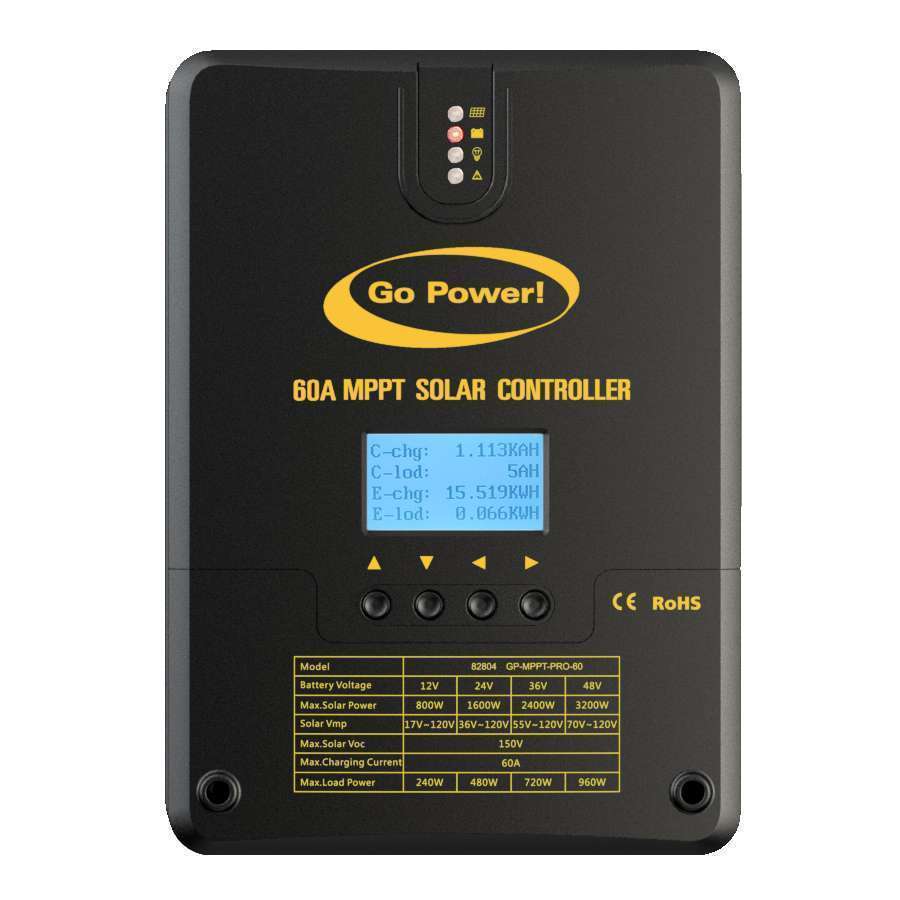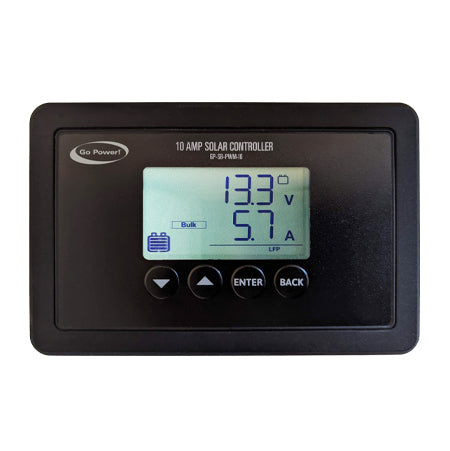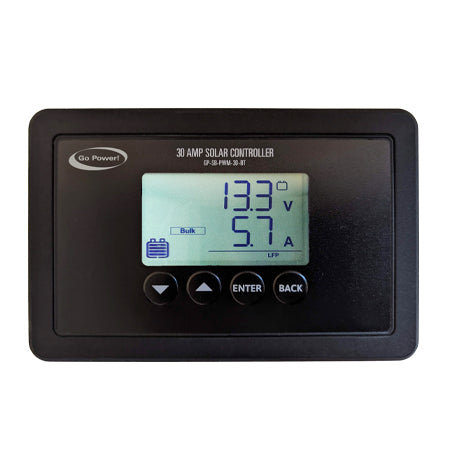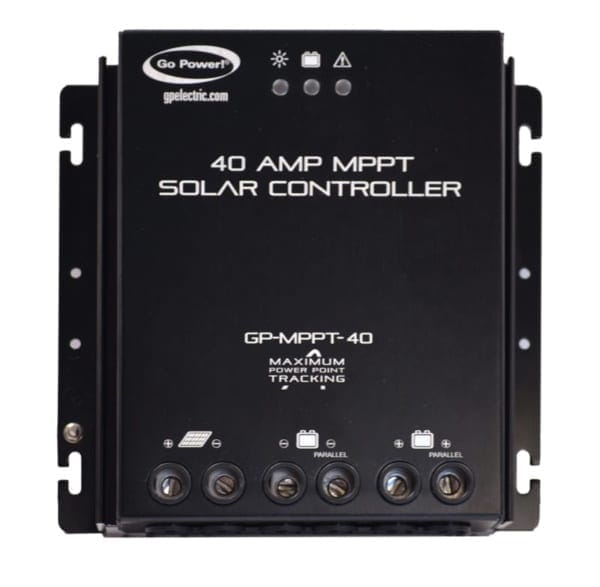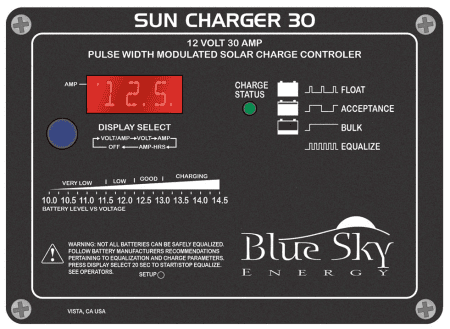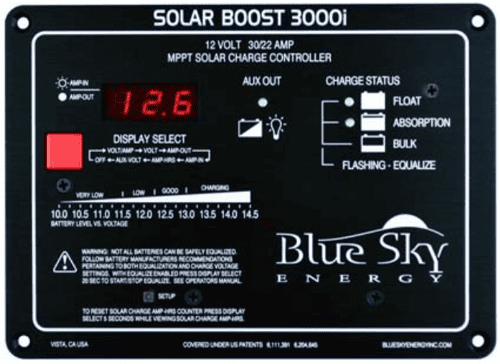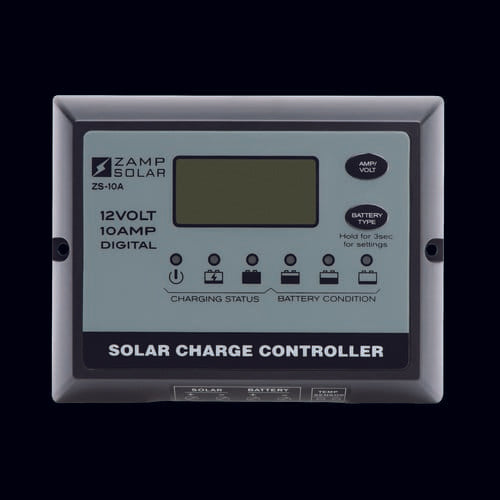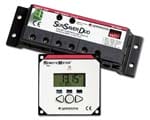RV Solar Charge Controllers
RV solar systems are more than just panels on the roof. Any well-designed RV solar system has a Charge Controller or Regulator as part of the system. It is the heart of the solar system. Without it, the system won't be able to properly charge batteries. Or, at the very least, shorter battery life will result.
One should NEVER EVER connect a solar panel directly to a battery pack without a controller….unless the solar panel is so small it is classified as a trickle charger.
Picking the right solar charge controller for your RV system is important. There are plenty of good products on the market today, including a few great ones. Solar charge controllers of average quality work well, are very reliable if installed correctly, and won't break the bank.
There are a few basic differences in technology that are important to consider before buying. With this knowledge, a well informed consumer can make the right choice easily.
PWM RV Charge Controllers
These solar charge controllers are designed to charge batteries at different voltage levels, slowing plate sulfating and extending battery life. They are easy to identify. The features describe different charging modes, such as bulk charge, absorption charge, float charge, and equalize.
These solar charge controllers are usually low-cost, come with a host of other features, and work well for most applications. They are the most commonly found solar charge controllers on the market today and cost anywhere from $50-$400, depending on the power rating and other added features.
MPPT RV Solar Charge Controllers
The latest Charge Controller technology to be brought to the RV industry employs MPPT or Maximum Power Point Tracking.
A solar charge controller with MPPT (a technology borrowed from the commercial and residential solar industry) will charge batteries 10%-30% more efficiently from the solar panels to the RV batteries than one without this feature. This is not because MPPT makes the solar charge controller more efficient; instead, MPPT is just smarter.
Every solar panel made has a different maximum power point. A point at which current (amperage) and voltage peak. An MPPT solar charge controller is designed to sense this point and adjust itself for maximum output. This point is referred to as the ‘knee of the curve' and is shown on the IV graph found on almost every solar panel datasheet.
MPPT solar charge controllers are more expensive than PWM types. A good MPPT solar charge controller can cost $250-$700, depending on the power rating. So, the added value of the energy produced versus the added cost must be considered.
Depending on the size of the system, it could make as much difference as adding another panel. In some cases, updating just the solar charge controller itself to MPPT is about the same cost as adding another solar panel to the system with the same benefit and cost. This is something to consider for those with older controllers.
Amperage
All Solar Charge Controllers have a power rating. This is usually measured in AMPS. It is the maximum amount of electrical current the solar charge controller can handle without failing. A label is found on the back of every solar panel will detail the maximum amount of amps the panel will output. This is usually expressed as ISC or short circuit current.
Since most RV solar panels are wired in parallel, the amperage from every panel is added together. The total solar panel current or battery current should not exceed the maximum power rating of the charge controller. It is a good system design practice to oversize the solar charge controller by 20%.
The solar charge controller will run cooler, be more reliable, and last longer. Power does come at a price. Therefore, the higher the power rating of the charge controller, the more it will cost.
Environmental Concerns and Placement
Solar charge controllers are usually mounted inside the RV passenger compartment and recessed in a wall cavity. While this installation looks good, it can sometimes be problematic if larger than 30amp rating. Heat must be dissipated; otherwise, the solar charge controller will fail.
We would never suggest locating the solar charge controller in the battery compartment. There are many reasons for this, the biggest of which are corrosion caused by battery off-gassing and the potential for fire should there be a spark..
Enhance Your Solar System Today
Ready to take your solar power system to the next level? Explore our range of solar charge controllers and find the perfect match for your setup. With our guidance and top-quality products, you'll be on your way to a more efficient, reliable, and cost-effective solar power system.
Don't let your hard-earned solar energy go to waste – invest in a solar charge controller from The Solar Store today!
Contact us today, and we will gladly assist you every step of the way to energy independence.
Frequently Asked Questions
What type of solar charge controller is best suited for my solar power system?
The best type of solar charge controller for your solar power system depends on several factors, including the size of your system, the type of batteries you are using, and your budget.
What is the difference between PWM and MPPT solar charge controllers, and which one should I choose?
PWM solar charge controllers (Pulse Width Modulation) are simpler and more cost-effective, making them suitable for smaller systems with lower power requirements. They work by gradually reducing the power from the solar panels as the battery reaches full charge, which can lead to some energy loss.
On the other hand, MPPT controllers are more advanced and efficient, especially in larger systems. They adjust the input voltage to find the maximum power point of the solar panels, ensuring optimal energy harvest even in varying weather conditions.
How does a solar charge controller protect my battery and improve the efficiency of my solar system?
A solar charge controller protects your battery by regulating the voltage and current coming from the solar panels to the battery. It prevents overcharging, which can damage the battery and reduce its lifespan, and also stops reverse current from flowing back to the solar panels at night. By providing safe and efficient control, it extends battery life and ensures your system can reliably charge batteries whenever solar energy is available.

